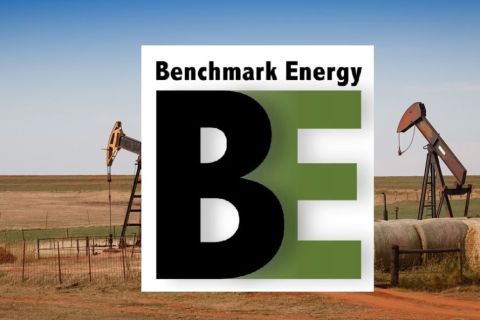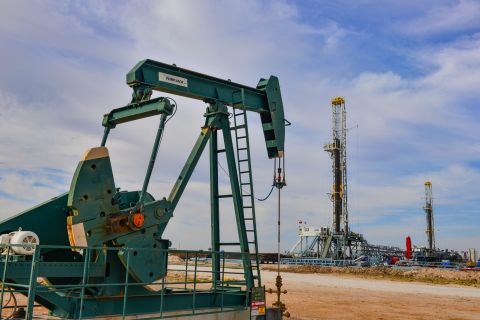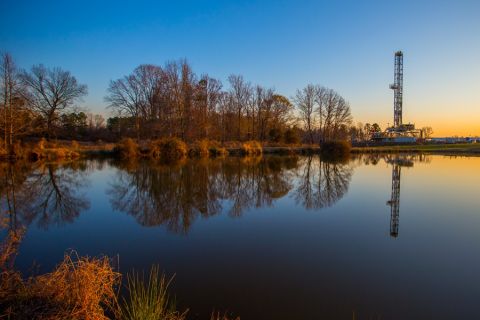The effort to develop unconventional resource plays has driven the need for higher quality seismic data and caused the effort in more recent years to shift focus to the low frequency side of the spectrum. Fundamental changes in the understanding of vibrator and sensor technology have expanded the opportunity to generate and record broader bandwidth seismic data.
During the same period, operational strategies have been developed that have delivered significant productivity improvements. All of these advances have been enabled by a new generation of equipment designed to deliver broadband seismic data while offering levels of flexibility and efficiency that allow recording crews to adapt to different shooting environments and still provide high-quality, low-cost data to their clients.
Challenges, rewards
To some degree it has been the recent push to explore for unconventional oil and gas plays that has had the greatest impact on seismic data recording in the past 10 to 20 years. As the exploration industry gradually gained an understanding of rock types and properties and their role in production, the value of high-quality seismic data became increasingly apparent as the relationship between the understanding of these rock properties and successful drilling projects evolved. Without detailed drilling plans derived from seismic data the current successes in unconventional resources plays would have been constrained. Understanding rock properties, fracture orientations and heterogeneity are key factors in interpretation. Broadband seismic has played a major role in this evolution. Higher frequency data allow interpreters to comprehend greater detail in the seismic data, while expanding the spectrum into the low-frequency portion impacts well ties and the seismic inversion process, leading to significantly improved impedance and velocity models.
Innovations in source technology
Vibroseis technology has undergone extensive improvement in recent years. Modern engineering methods have been systematically applied to overcome limitations imposed by mechanical and physical constraints. By methodically studying all the components of the Vibroseis system, it has been possible to improve low- and high-frequency performance, reduce harmonics and increase the accuracy of sweeps in terms of fundamental ground force. These technologies have been implemented across the full range of INOVA source products and applied to surveys in all regions of the world.
Gathering seismic data in both the high- and low-frequency portion of the spectrum is a world-class challenge that equipment manufacturers have now begun to address. Broadband vibrators like the INOVA AHV-IV 364 now regularly operate in production with sweeps starting as low as 1.5 Hz, which enhances the final processed seismic data with frequency content as low as 2 Hz to 3 Hz. At the other end of the spectrum, the INOVA UNIVIB (Figure 1) can now sweep reliably from 1 Hz to 400 Hz, delivering very high-frequency data with a small lightweight footprint optimized for challenging terrains. These vibrators have worked in dense forested regions like the Alberta oil sands, where line cutting is required. Due to the reduced size and footprint, they are proving to be an improved method for gathering data. Broadband sweeping and high-productivity Vibroseis methods have been combined to produce superior results both seismically and operationally.
FIGURE 1. The INOVA UniVib source vehicle recently did a job in Alberta, Canada, during the winter season. Broadband production sweeps and high-productivity Vibroseis methods are increasingly used in this region, resulting in higher quality data and improved operational production rates. (Source: INOVA)
Recording technology, improved sampling
The focus on seismic recording equipment development has been primarily on channel count expansion in recent years. Wide-azimuth densely sampled data enhance interpretation for unconventional plays by providing data that support a variety of prestack interpretation methods like amplitude vs. offset and anisotropic data analysis. These types of field geometries also are creating spectacular post-stack images. Another fundamental driver on the channel count increase is the high-productivity Vibroseis techniques used in open environmental regions like the Middle East and North Africa. These combined requirements have pushed cable-based acquisition systems to higher and higher channel counts. On some projects channel counts now exceed 100,000 live stations. During the same period of development, cableless system technology has been improved to the point where it is accepted and used almost exclusively in some regions, most notably North America. The growth of cableless systems like INOVA’s Hawk (Figure 2) in that region has been a result of its significant operational advantages over cable: smaller crews, less weight, lower footprint, and more efficient and flexible operations. Cableless technology also delivers cost-effective high-density sampling by increasing crew efficiency and allowing new survey designs to be implemented in the field.

FIGURE 2. This image shows the INOVA Hawk in cableless mode. Each Hawk unit is a self-contained recording system capable of recording continuous data for 30 or more days. (Source: INOVA)
With digital sensors capable of recording as low as DC in a compact and operationally efficient package, the system provides the ability to record undistorted broadband energy and has been shown to enhance both processing and interpretation.
INOVA’s latest digital single component sensors (Figure 3) can record data from 1 Hz to more than 400 Hz with minimal phase or amplitude distortion, making them an ideal choice for broadband cable or cableless recording in unconventional prospects. While digital sensor technology has not gained significant market acceptance to date in all regions, the need for undistorted broadband data will create an opportunity for this technology to show the value of its defining properties. Digital sensors are designed to be deployed for single-sensor recording, eliminating the need for crews to spend time deploying field arrays. While arrays do provide certain types of noise reduction, the high-fold dense acquisition geometries, which are currently trending, will minimize the value of these current operational approaches.

FIGURE 3. The AccuSeis 1-C sensor can record data from 1 Hz to more than 400 Hz. (Source: INOVA)
Command, control
Innovations in acquisition techniques, driven by the need for increased productivity in high-channel-count Middle East crews, mean that large Vibroseis crews can now acquire tens of thousands of vibrator points per day thanks to simultaneous source techniques. But these techniques also can be deployed at an appropriate scale in other regions. By integrating high-performance source controllers like INOVA’s VibPro HD with advanced recording systems and digital radios, high-productivity Vibroseis operations are now being enabled in the Canadian Arctic.
Recent software innovations also are providing seismic crews with unparalleled flexibility. With surveys now being commissioned in the most complex of terrains, the need to combine operational techniques has never been greater. With central systems like INOVA’s iX1, users can fully exploit the benefits of an integrated hybrid system, combining cable-based and cableless recording and shallow- water transition zone gear through a single centrally controlled broadband system delivering common format SEG-D or SEG-Y products.
Unconventional resource plays have provided a driver that has had a profound impact on seismic equipment development. Combining broadband innovations in source and recording technology with highly efficient operational techniques and systems will enhance all land seismic operations. Users can now mix equipment types to meet the needs of nearly any recording challenge while simultaneously delivering superior quality broadband data in high-productivity modes.
Recommended Reading
Benchmark Closes Anadarko Deal, Hunts for More M&A
2024-04-17 - Benchmark Energy II closed a $145 million acquisition of western Anadarko Basin assets—and the company is hunting for more low-decline, mature assets to acquire.
‘Monster’ Gas: Aethon’s 16,000-foot Dive in Haynesville West
2024-04-09 - Aethon Energy’s COO described challenges in the far western Haynesville stepout, while other operators opened their books on the latest in the legacy Haynesville at Hart Energy’s DUG GAS+ Conference and Expo in Shreveport, Louisiana.
Mighty Midland Still Beckons Dealmakers
2024-04-05 - The Midland Basin is the center of U.S. oil drilling activity. But only those with the biggest balance sheets can afford to buy in the basin's core, following a historic consolidation trend.
Mesa III Reloads in Haynesville with Mineral, Royalty Acquisition
2024-04-03 - After Mesa II sold its Haynesville Shale portfolio to Franco-Nevada for $125 million late last year, Mesa Royalties III is jumping back into Louisiana and East Texas, as well as the Permian Basin.




